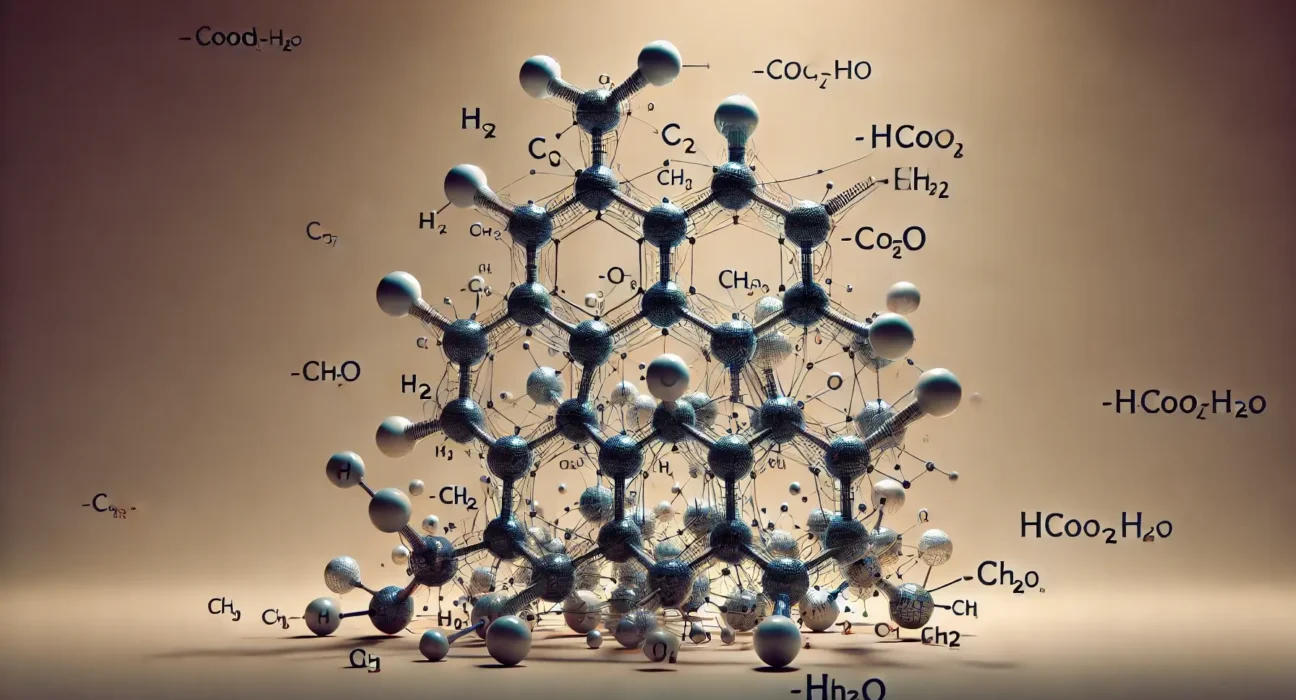Formic acid (hcooch ch2 h2o), methylene groups (CH2), and water may seem like unassuming chemical substances, yet their interactions and uses vary considerably. In this blog, we’ll examine their molecular structures, industrial applications, environmental considerations, and recent discoveries within science to provide an idea of how molecules affect our daily lives and scientific discoveries alike.
| Compound | Molecular Formula | Key Properties | Applications |
|---|---|---|---|
| Formic Acid | HCOOH | Simple carboxylic acid, pungent smell | Leather tanning, textiles, animal feed |
| Methylene Group | CH2 | Reactive intermediate, versatile | Organic synthesis, polymer production |
| Water | H2O | Universal solvent, polar molecule | Reaction medium, chemical purification |
Understanding Molecular Foundations of Genetic Engineering
Chemical discussion begins by looking at its molecular structure and properties, with formic acid at the forefront. With its tiny basic structure, distinct scent, and acidity, formic acid stands out as one of the easiest carboxylic acids to utilize in chemical reactions involving water-based solutions.
Methylene class (CH2) molecules are an indispensable building block in organic chemistry, serving as versatile intermediates and reactants in many reactions. When combined with water as a universal solvent, its use opens the doors for multiple processes and procedures. Water’s polar nature, high dielectric constant, and ability to create hydrogen bonds make it much more than an inactive medium—rather, it becomes an integral component in chemical reactions that involve formic acid or CH2-containing substances.
Implementations Across Industries
hcooch ch2 h2o has an impressively diverse range of industrial applications. Formic acid, for instance, plays an indispensable role in leather tanning, textile dyeing, and rubber production processes. Due to its natural antibacterial properties have become a sought-after ingredient for animal feed, increasing shelf life while decreasing the need for other preservatives. Its moderate biodegradable and non-toxic nature is gaining increasing interest to decrease dependence on harsher chemicals.
CH2 groups play a central role in organic synthesis, providing a gateway for more complex molecules to form. Methylene derivatives play an essential role in producing formaldehyde polymers and other fine chemicals; when reactions use water as their solvent, this often improves efficiency while aiding product separation and helping minimize waste production.
Considerations for Environmental and Biological Issues
Safety and sustainability should always be the main concerns when using chemicals. HCOOH CH2H2O has relatively minimal environmental impacts compared with other industrial acids; additionally, formic acid can biodegrade quickly due to its natural presence in plants and insect venoms—further evidence of its eco-friendliness.
Water in biological ecosystems isn’t simply an insignificant component; rather, it plays an essential role in stabilizing intermediates and detoxifying and eliminating harmful substances like formic acid in natural environments. Knowing this fact will ensure that future products and processes that we might create ourselves are eco-friendly.
More to Read: Fapelli
Recent Advances in Science and Technology
Recent research has unlocked some astounding uses and methods of producing CH2-based compounds. Researchers are investigating ways of producing formic acid from renewable sources as an energy storage chemical and CH2-based chemicals are being examined as potential contributors to creating materials with unique electronic and mechanical characteristics.
Water is at the forefront of technological development. Researchers are using advanced spectroscopy techniques to understand better how HCOOHCH2 H2O interacts with aqueous environments, providing guidance for more eco-friendly chemical processes and showing their synergy with one another and their solvent environment.
Conclusion
HCOOH and CH2 H2O are molecules of immense complexity and versatility. These essential molecules form the backbone of many traditional industries and newer technologies, from their chemical foundations to their numerous environmental and industrial uses. As we further explore their capabilities, we may uncover novel methods for improving processes or creating environmentally sustainable products while expanding our understanding of the chemical world.
FAQ’s
What Is hcooch ch2 h2o?
hcooch ch2 h2o refers to formic acid (HCOOH), which is typically combined with the methylene group (CH2) and water (H2O) for chemical interaction studies as well as potential applications.
Where are HCOOHCH2 H2O compounds usually employed?
It is utilized across several industries, including tanning leather, dyeing textiles, and preserving animal feed; additionally, it serves as an intermediate for organic chemical synthesis.
Why does water play such an essential role in HCOOHCH2H2O reactions?
Water is a solvent and reactant in chemical processes, increasing efficiency while creating hydrogen-bond networks.
Are hcooch ch2 h2o chemicals considered green chemicals?
Yes, formic acid (HCOOH) is biodegradable and frequently considered an environmentally friendly replacement for harsher chemical solutions in various applications.
What are the latest scientific advancements in hcooch ch2 h2o?
Scientists are exploring methods of producing renewable formic acid, investigating its application in green chemistry, and exploring potential energy storage applications.






